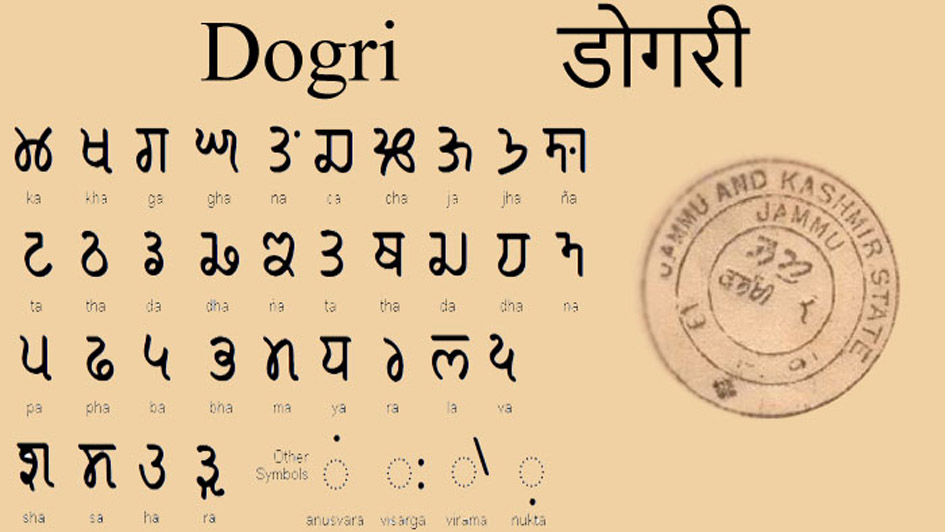Declining Dogri Language: Causes, History, and Revitalisation Efforts
Explore the decline of the Dogri language in Jammu — its historical roots, socio-economic causes, and how policy reforms and cultural initiatives can revive endangered Indian languages.
Declining Dogri Language
Topping a UNESCO list of countries with the most endangered dialects, India has lost over 220 languages in the last half-century alone which is starkly visible in the decline of the Dogri language in the Jammu region.
About Dogri:
Family: Indo-European > Indo-Iranian > Indo-Aryan > North-Western Zone.
Speaking Region: Core region is the Jammu division. It is also spoken in adjoining areas of Himachal Pradesh, Punjab (India), and parts of Pakistani Punjab.
Script: Historically written in Dogri Akkhar (Takri script). Officially, the Devanagari script is now used.
It was officially included in the Eighth Schedule of the Constitution via the 92nd Constitutional Amendment Act, 2004, giving it official recognition and status.

What are the major causes behind the decline of some Indian languages?
The decline of Indian languages like Dogri is a complex phenomenon driven by a confluence of socio-economic, political, and generational factors.
Socio-Economic Pressures and Globalisation: The pursuit of economic opportunity and social mobility often encourages a shift towards dominant languages like English and Hindi which are perceived as gateways to better education and employment. This creates a cycle where regional languages are seen as having low “functional value.”
Policy and Institutional Neglect: Many languages, including Dogri which waited until 2003 for constitutional recognition under Schedule VIII, have historically been excluded from formal domains like education, administration, and the judiciary.
Generational and Rural-Urban Divides: There is a sharp intergenerational drop in proficiency. While older generations may be fluent speakers, younger populations show rapidly declining skills in reading and writing, eventually leading to a complete loss of active use.
Absence of Data and Mindset: The postponement of the 2021 Census has created a critical data gap, hindering targeted policy interventions for endangered languages. Underpinning all this is a pervasive colonial mindset that equates English with “progress” and modernity, while marginalising indigenous languages.
Consequently, reversing this decline is imperative to prevent the erosion in order to protect the cultural identity and historical legacy of the Jammu region.
What was the importance of the Dogra dynasty in promoting the Dogri language?
Dogri enjoyed significant patronage under the Dogra rulers (1846-1947) of the princely state of Jammu and Kashmir.
Court Language: Dogri was used as a primary language of administration and court proceedings, giving it official prestige and a functional domain.
Literary Patronage: The Dogra courts were centres of literary activity, commissioning and patronising works of poetry, literature, and historical chronicles in Dogri, which helped standardise and enrich the language.
Regional Cultural Identity: By embedding Dogri in the machinery of the state and cultural expression, the Dogra dynasty firmly established it as a powerful symbol of regional identity and heritage for the people of Jammu.
How can this issue of Indian languages sliding into extinction be addressed?
Addressing India’s linguistic crisis requires a multi-pronged strategy that moves beyond token recognition to active revitalisation.
Policy-Driven Revitalisation: The government must integrate endangered languages into the formal education system, from primary levels to higher education, including teacher training and material development. Furthermore, their use in official work, public signage, and media (like All India Radio) must be actively encouraged.
Leveraging Technology and Media: Promoting the language through digital tools—such as developing keyboards, translation apps, and online content—can make it relevant for the youth. Supporting films, music, and literature in these languages can enhance their popular appeal and prestige.
Generational Knowledge Transfer: Community-led initiatives which includes establishing language clubs, organising cultural festivals, and creating informal “language nests” where elders can teach the language to children, ensuring intergenerational transmission are important.
Decolonising the Mindset and Data Collection: A nationwide campaign is needed to shift the perception that English is the sole marker of success, celebrating India’s multilingualism as a strength.
The extinction of a language is not merely the loss of words, but the erasure of a unique worldview and cultural memory. Preserving India’s linguistic diversity demands a concerted effort that blends robust policy, community engagement, and a fundamental shift in societal attitudes.
Subscribe to our Youtube Channel for more Valuable Content – TheStudyias
Download the App to Subscribe to our Courses – Thestudyias
The Source’s Authority and Ownership of the Article is Claimed By THE STUDY IAS BY MANIKANT SINGH





